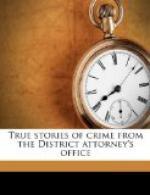In the confession of Jones the State had sufficient direct evidence of the crime and of Patrick’s connection with it, providing there was other evidence tending to connect Patrick with its commission. This corroborative evidence is largely supplied by the facts which show that for a long time Patrick conspired with Jones to steal the bulk of Mr. Rice’s estate at his death. This evidence not only shows Patrick’s possible motive for planning Mr. Rice’s murder, but also tends to corroborate Jones’s whole story of the conspiracy.
Rice did not know Patrick even by sight. He had heard of him only as a person retained by another lawyer (Holt) to do “the dirty work” in an action brought by Rice against Holt, as executor, to set aside Mrs. Rice’s will, in which she assumed, under the “Community Law” of Texas, where Rice had formerly resided, to dispose of some $2,500,000 of Rice’s property. If Rice was a resident of Texas she had the legal right to do this,—otherwise not. Holt employed Patrick to get evidence that Rice still was such a resident. Rice knew of this and hated Patrick.
Patrick’s connection with the Rice litigation had begun four years before the murder, which was not planned until August, 1900, His first visit to Rice’s apartment was made under the assumed name of Smith for the purpose of discovering whether the valet could be corrupted into furnishing fictitious proof of Rice’s intent to reside in Texas. He flattered Jones; told him he was underpaid and not appreciated, and, after a second visit, at which he disclosed his right name, persuaded him to typewrite a letter on Rice’s stationery addressed to Baker, Botts, Baker & Lovett (Rice’s attorneys), in which he should be made to say that he had lost hope of winning the suit against Holt, was really a citizen of Texas, and wanted to settle the litigation. Patrick said that he could arrange for the signing of such a letter and was willing to pay Jones $250 for his help. Jones agreed.
Patrick now learned that Mr. Rice was living with no companion except Jones; that he held little communication with the outside world; that the valet was in his confidence and thoroughly familiar with his papers, and that the will made in 1896 disinherited natural heirs in favor of an educational institution which he had founded in Texas. He also learned that while Mr. Rice was 84 years of age he was in possession of all his faculties, conducted his own business, and might live for years. Possessed of these facts Patrick’s evil mind soon developed a conspiracy with Jones to secure the whole estate.
Mr. Rice’s pet charity was the William M. Rice Institute “for the advance of science, art and literature,” of Texas, which he had founded in 1891. He had donated to it more than a million and a half dollars. By the will of 1896 only small legacies were bequeathed to relatives, while the bulk of his fortune was left to the Institute.




